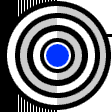|
January 14, 2002
|
|
 |
 |
| Comparative genomics at the Joint Genome Institute: an interview | ||
| Contact: Paul Preuss, paul_preuss@lbl.gov | ||
|
|
The Department of Energy's Joint Genome Institute is a consortium founded by Lawrence Berkeley, Lawrence Livermore, and Los Alamos National Laboratories, now with partners from several other institutions. Over the past year and a half, JGI has announced a string of remarkable events, among them the sequencing of three human chromosomes, the sequencing of 15 microbes in a single month, the sequencing of the remarkable fugu fish, and the sequencing of the primitive chordate Ciona intestinalis, or "sea squirt" — among investigations of many other disparate organisms. To find out what these creatures have to do with one another and with human beings, Science Beat interviewed JGI director Trevor Hawkins, functional genomics head Paul Richardson, and computational genomics head Dan Rokhsar. Following are edited excerpts. Science Beat: Why all these seemingly unrelated organisms? Is there a unifying theme?
Trevor Hawkins: It was known pretty early on that a lot of the sequences that are present in the human genome are also present within simpler organisms. We evolved from other things, and evolution doesn't fix what isn't broken. If you look at the fugu, you say, okay, we have more cells than it does, and it has some tissues that we don't have, like gills, but it has a liver, it has a circulatory system, etc., all the things we do. You start to wonder, if it has all these functions and it shares them with us, is it in fact using the same basic 'construction kit'? And the answer is yes.
Paul Richardson: The overall reason for genome work is to gain insight into the function of the human genome. But you have to get far away from the human genome to get that insight. Evolution takes a very, very long time. To see significant changes in the genes, especially well-conserved genes, you might have to go several hundred million years back in time to a common ancestor, to something like Ciona. In general we are looking for conserved function, and when we find genes that have the same sequence or very similar sequences, they are very likely performing the same biochemical reaction.
Dan Rokhsar: We use computer programs with the ability to look at multiple genomes and line them up and look for commonalities — which, if they're there, indicate some functionality, even if we don't know what it is. If it's there in mouse, if it's there in fugu, if it's there in sea squirt, it must be doing something important. Hawkins: One of the key goals of DOE's Genomes to Life program is to understand regulatory networks. We're starting to see these very short regions, maybe 50, 100, 150 nucleotide matches between the squirt, fugu, human, and mouse. One of the programs that we've set up has been centered upon taking these elements and proving through various assays that these are in fact regulatory structures. It's not obvious. You don't have a gene, and here's an element and you say aha! here's the switch that turns this on. Richardson: Promoter elements are typically two or three hundred bases upstream from the gene and may contain very small stretches of DNA, five or ten bases, that interact with specific transcription factors to turn on the gene. And oftentimes there are multiple transcription factors that we find upstream, which interact with the transcription machinery. In addition there are usually upstream enhancers, especially in eukaryotes [organisms whose cells have nuclei], that can be anywhere from 1,000 bases to 10,000 bases away, that also affect how the gene is turned on — and you can have transcription factors binding there that actually turn on a gene or also silence it. Hawkins: With a lot of diseases, our next level of understanding is going to be based upon how genes are interacting with each other within cells. The old notion of one gene, one protein, one disease — forget it! There are very few examples of that. If you are trying to design a drug or a small molecule that affects a
whole gene pathway or a network of genes switching on and off, you've
got to know how all the genes are interacting with each other. Rokhsar: You can address a specific set of issues and have the programs drive the sequencing, rather than vice versa. Hawkins: You can think in a different way. In the microbial community,
for example, they were used to taking a microbe, spending a couple of
years getting the sequence finished, and then they analyzed it and annotated
it. We can sequence almost two of your average microbes ten times in one
day! Next page: Comparative genomics at the JGI— it all started with the Human Genome |
||||||||||||||||||||||||||||